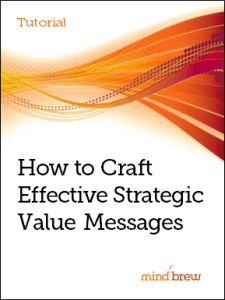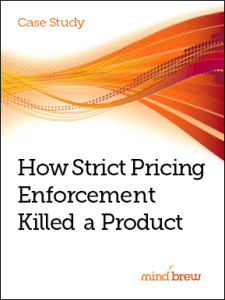A “strategic value statement” is a paragraph or two of compelling, prospect-facing content that teaches the prospect what they need to know and how they need to think about a particular value-driver in their evaluations. When crafting market-facing value-statements, be mindful of the fact that downside or loss positioning can be more compelling and effective than upside or gain positioning.
We’re often in the habit of highlighting the upside benefits, showcasing the upside gains that can be achieved, and so on. We tend to focus on the positives, or the “plusses.” That’s important, to be sure. But there’s a little-known aspect of human-behavior you can tap-into to make your communications even more effective.
Human beings are biologically-wired for survival. As such, the human brain has evolved to put more emphasis and importance on “avoiding pain” relative to “achieving gain”. Studies have shown that buyers will often perceive a downside benefit to be bigger or more important than an upside benefit, even though the net-result may be exactly the same.
In other words, they will see a benefit positioned as helping them to “avoid a $10K loss” as being bigger and more important than that same benefit positioned as helping them to “achieve a $10K gain”. Of course, the net-result is exactly the same. But it’s perceived differently when positioned to the downside rather than the upside.
As your prospects are all presumably human, these dynamics of human perception can’t help but play a role in their purchasing decisions. So look for ways to also position your benefits in terms of risk-mitigation or loss-avoidance. And most definitely, look for any and all opportunities to highlight and magnify the downside risks or increased costs associated with the competitive alternatives your prospects are considering.













